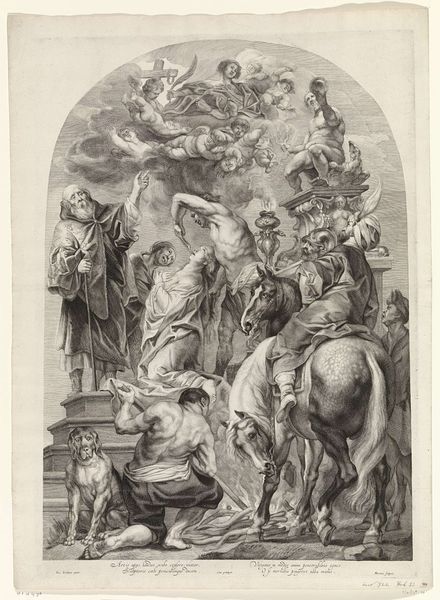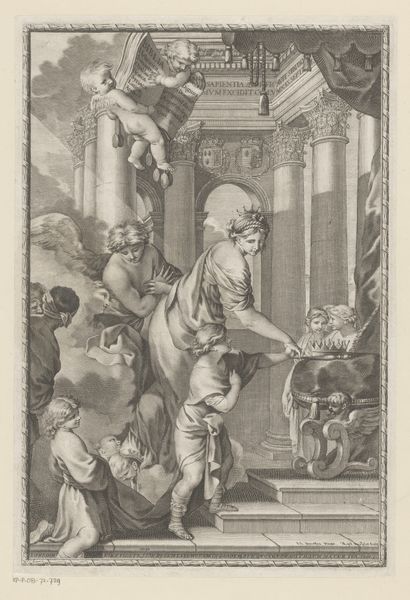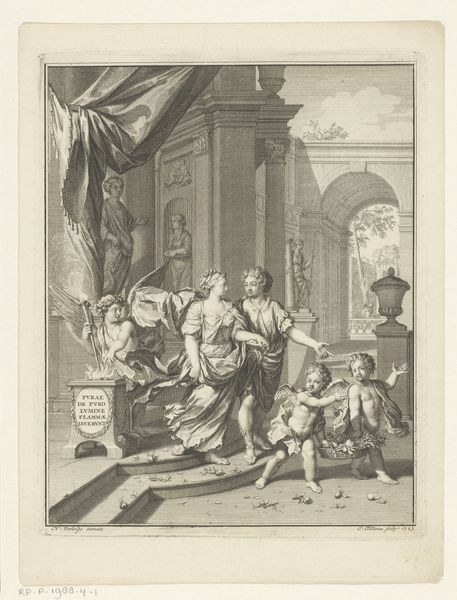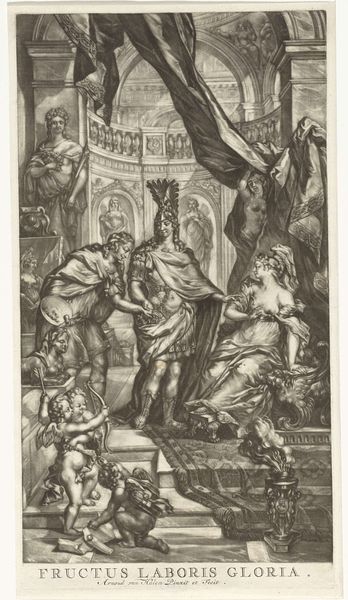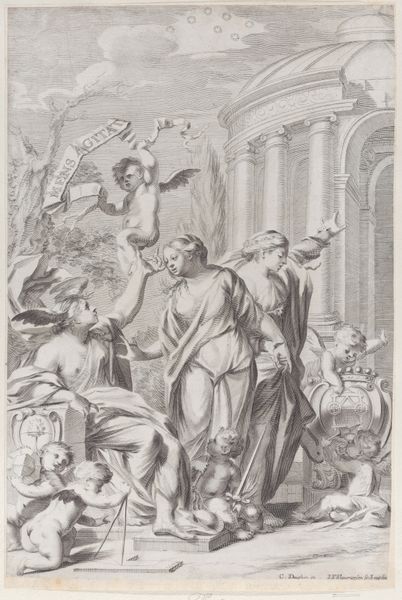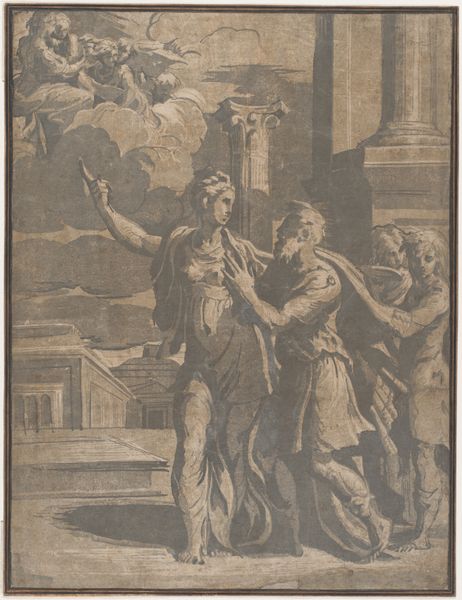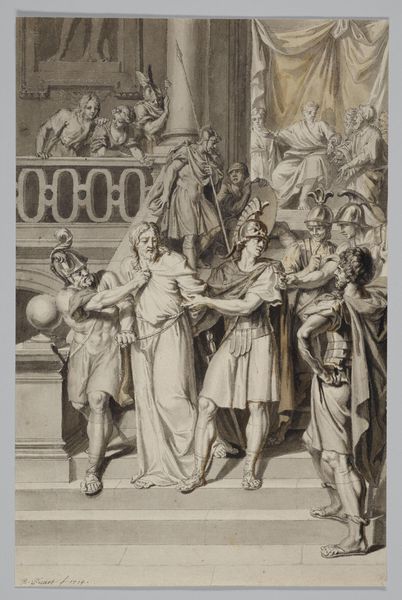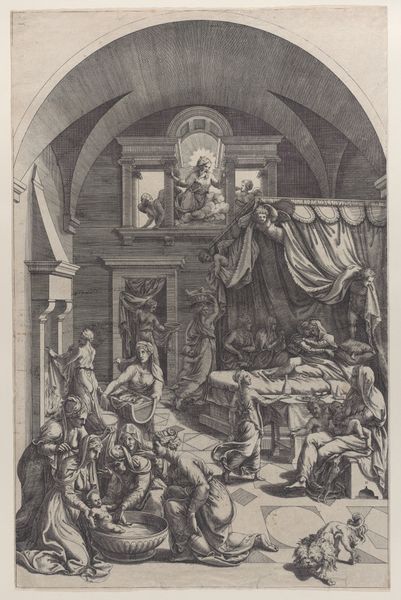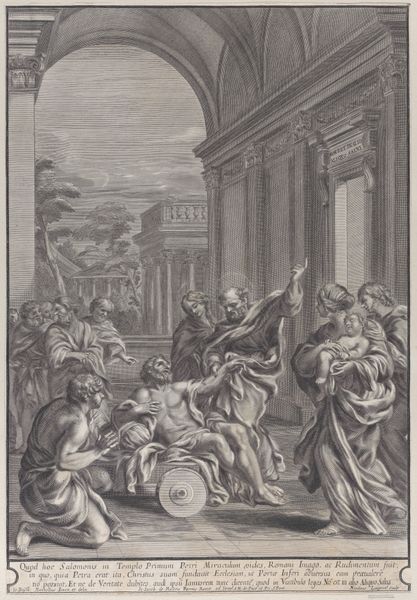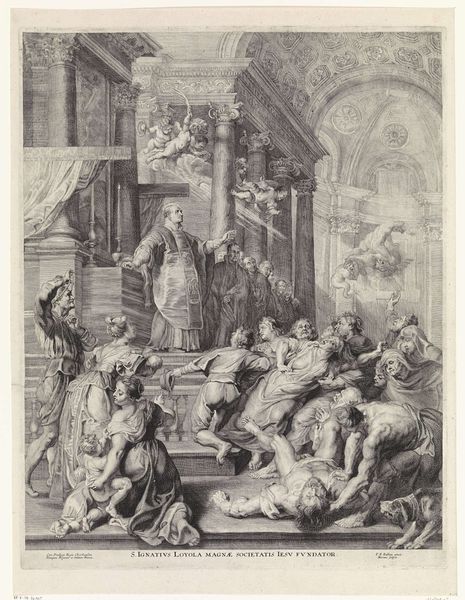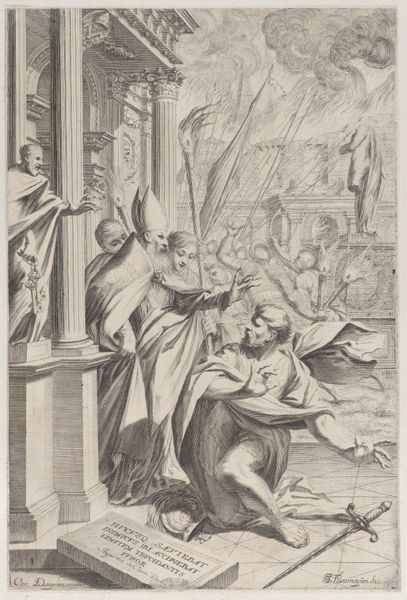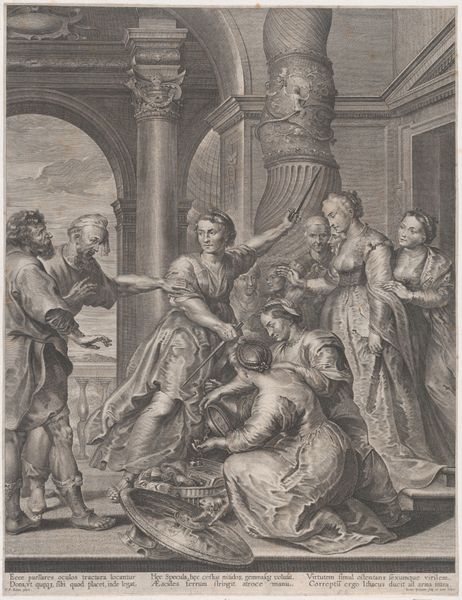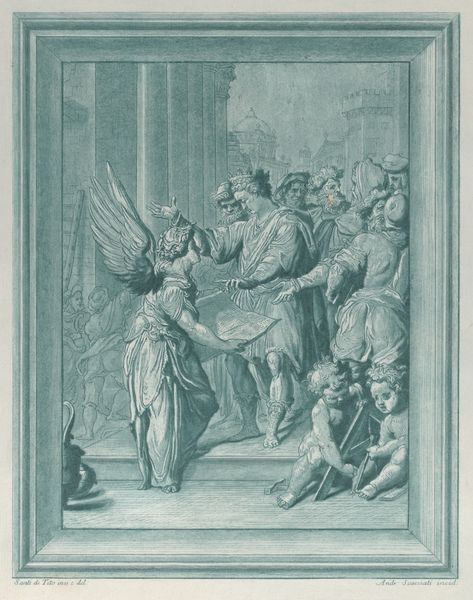
Forarbejde til maleriet: Danmark og Norge hylder Chr. VI (brændt med Christiansborg 1794) 1746 - 1749
0:00
0:00
drawing, print, engraving
#
portrait
#
drawing
#
narrative-art
#
baroque
# print
#
cityscape
#
history-painting
#
academic-art
#
engraving
Dimensions: 232 mm (height) x 158 mm (width) (bladmaal)
Editor: Here we have Marcus Tuscher’s engraving, "Forarbejde til maleriet: Danmark og Norge hylder Chr. VI," created between 1746 and 1749. It seems to depict a regal figure on horseback, being presented with crowns and floral wreaths. The details are fascinating but also quite dense. What are your initial thoughts when you see this image? Curator: This piece resonates deeply within the framework of power and representation. Think about it – Tuscher created this as preparatory work, a stage in visualizing the relationship between Denmark, Norway, and their ruler, Christian VI. How does the artist negotiate the tensions between celebration and the realities of colonial power dynamics? Notice how the figures presenting the wreaths are positioned, almost subserviently. How does this visual hierarchy reflect the social and political power structures of the time? Editor: So you're saying this isn't simply a celebratory image, but also a commentary on power? The body language of the presenting figures did strike me as somewhat subdued, despite the offering of such celebratory tokens. Curator: Precisely. We must ask, who is being celebrated, and at whose expense? Consider the historical context. Absolutism was the driving force in Denmark, enforcing its political goals. In this context, it is very important to recognize the function of visuality as a means for maintaining hegemony. Look at the grandeur of the architecture, it’s not just ornamentation. Do you see the statue of the woman standing guard as another sign of cultural hegemony? Editor: That is something I completely missed initially. Seeing how you put this work in a sociopolitical framework casts the image in a new light. It almost feels like propaganda. Curator: It certainly shares common ground with propagandist messaging. Analyzing art means engaging with its inherent power dynamics and challenging what it seeks to normalize or naturalize within its specific historical framework. Editor: I’ll definitely carry that perspective as I continue to examine this piece and other works from that era. Thanks for sharing your insight. Curator: My pleasure. Remember, critical art history requires that we investigate beyond face value and continually question the social, political, and economic implications embedded within the visual.
Comments
No comments
Be the first to comment and join the conversation on the ultimate creative platform.
